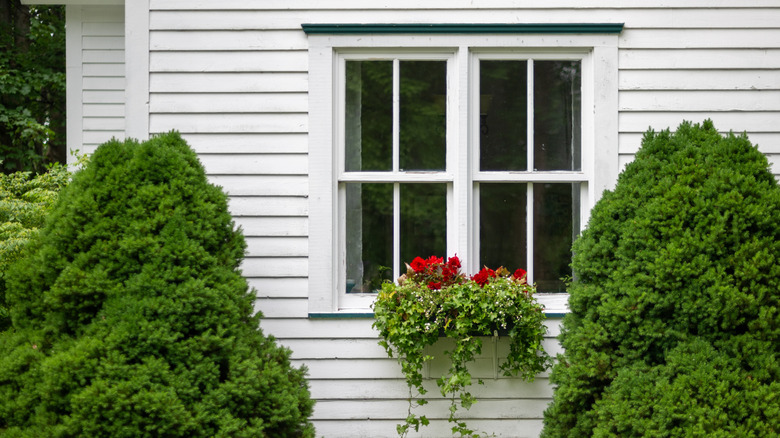The Centuries-Old Feature That Can Keep Fresh & Cool Air Moving Through Your Home
Ah, the modern marvel known as air conditioning. It's a staple in nearly every home, an absolute necessity for most people, and a very convenient feature you don't think much about until you're without it. Or until you realize there was a period of time before AC was even a thing. The first residential air conditioner was not installed until 1914. So, what did people do in previous centuries to get fresh air inside their stifling homes? They made the most out of their double-hung windows.
If you're not familiar with them, a double-hung window opens from the top and bottom. Modern homes often feature a window design where both panes can tilt inward for cleaning, but the original form was a clever design in itself. It consisted of sashes, or the inner workings of the window frame that hold the glass in place. The upper sash was fixed, while the lower was the piece that allowed up and down movement of the glass. And, among budget-friendly window treatment options, you can get top-down bottom-up versions, such as cafe shutters, that don't obstruct the airflow of double-hung windows.
The science behind double-hung windows
If you remember from grade school, hot air is less dense and therefore rises, while, with the help of gravity's downward pull, denser cool air sinks. So, understanding the natural tendency of air to move vertically helps make sense of how double-hung windows work to cool indoor spaces when it's warm. It's important to note that this won't necessarily be effective on hot summer days when the temperature outside is warmer than inside. Rather, think spring and fall. You can still circulate fresh air through the house on those dog days of summer with double-hung windows, but it will be hot air. If you don't have AC, try strategically arranging fans to cool the room while having your double-hung windows open at the same time.
The principle of double-hung windows is tied directly to the natural flow of air. So, opening the upper pane will allow the warmer air that has risen toward the ceiling to flow out of the room through the top of the window. Opening the bottom pane will allow the cooler air hovering low outside to flow into the room through the bottom of the window. You're cycling hot air out and cool air in.
Benefits of fresh air flow
Besides the cost advantage of saving money by not running your AC quite as much, there are additional benefits to utilizing your double-hung windows to let in fresh and cool air. You may know that AC recirculates the air already in your home and that stale air doesn't allow for the removal of odors or contaminants floating around inside, like dust and pollen. So, letting fresh air in increases air quality and benefits your health in the process. Condensation is another issue with decreased air flow – mold and mildew can accumulate if humid air remains in a room, which then can trigger respiratory issues like allergies.
There are additional ways to improve your home's air quality and get fresh air circulating, but the simplest and most efficient is to open those double-hung windows and let nature do its thing, while also keeping you cooler.


